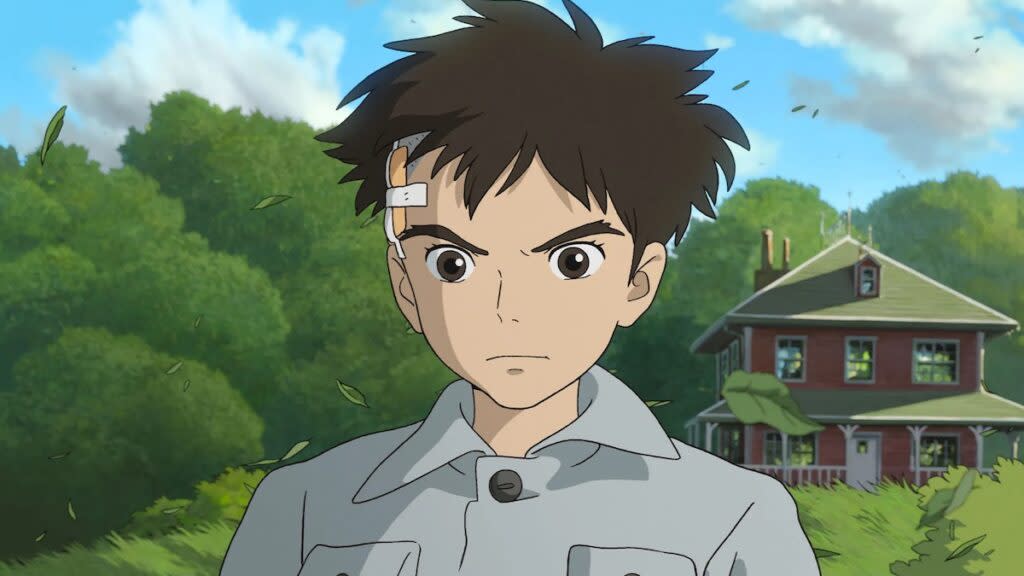‘The Boy and The Heron’ Review: Hayao Miyazaki’s Final Animated Film Is Among His Deepest and Darkest

- Oops!Something went wrong.Please try again later.
When Guillermo de Toro reminded the world that animation isn’t merely “a genre for kids but a medium for art” in his Oscars and BAFTA acceptance speeches as he won awards for his “Pinocchio” last year, he probably wasn’t thinking only of his own animated movie, or that of a specific filmmaker. But it’s a spot-on assertion for any Hayao Miyazaki picture — most recently, his beautiful, mournful and ultimately hope-filled “The Boy and The Heron.”
This is the Japanese master’s first feature film in 10 years — his last was 2013’s elegiac “The Wind Rises,” a title that was supposed to be Miyazaki’s official retirement from filmmaking. But you can’t stop an artist’s natural craving for making art any more than you can halt your instinctual need for air.
Thus, we’re graced with the existence of “The Boy and The Heron,” a kaleidoscopic and reflective rumination on life, death and the cyclical nature of creation that is almost entirely unadvertised by Studio Ghibli and is charged by a story that shares a deep kinship with “Pan’s Labyrinth.” (That Guillermo del Toro reference was no random choice.)
As was the case in the live-action “Pan’s Labyrinth” (and many other dark fairy tales that pit a child against the cruel world), “The Boy and The Heron” is also about the misadventures of a displaced young person who finds their footing in the depths of a dark fantasy world. In all its marvelous, hand-drawn glory of constantly morphing humans, creatures and ideas in the signature Miyazaki fashion, “The Boy and The Heron” is influenced by both some events from Miyazaki’s own childhood (reportedly, a first) and a novel gifted to a young Miyazaki by his mother, Genzaburo Yoshino’s “How Do You Live?”
In all honesty, that flawless title (still crowning the film’s Japanese release) should have been preserved for the film’s international release, too. After all, the question posed by it is very much on the mind and heart of the film — as well as its 11-year-old protagonist, Mahito.
The young Mahito is as anguished as any young person can be in the World War II-era Japan, having lost his mother to a devastating Tokyo fire and obliged to follow his stern father Shoichi on a move to the countryside — namely, to a residence called the Gray Heron Mansion. What hotblooded tween wouldn’t be confused and tormented in the hands of such sudden changes, including a new stepmother? In Mahito’s case, it is the kindly but unknowable Natsuko, who also happens to be Mahito’s mom’s sister.
Rather than parading it like a big reveal, Miyazaki works the sororate nature of the marriage into the story so naturally that it almost lands like an afterthought. Still, the detail instantly makes Mahito’s confusion all the more understandable — how could he possibly live (that title again) under the care of Natsuko and all the elderly maids staffed at the mansion (that he is sometimes rude to), while he’s haunted by all the demons and complex feelings of a pre-teen stuck in such circumstances? The future seems dark and bleak for him, so much so that he inflicts self-harm and shuts himself indoors, furthering his sense of alienation and loneliness.
But it all changes when an aggressive gray heron appears on his window one day, leading the way to the shadowy grounds of the estate, where a mercurial world exists beyond Mahito’s wildest imaginations. It’s one perched in the midpoint of life and death, of reason and absurdity, of the past and the future. It’s the stuff that both dreams and nightmares are made of, like a horror film with deeply poignant and sad undertones.
You won’t be surprised to learn that not everything in the “The Boy and the Heron” will be the easiest to follow — it’s as heady an adventure as any that came directly out of the mind of Miyazaki. But it’s all the more riveting for that exact enigmatic disposition, one that escalates once the heron effortlessly changes into a shapeshifting heron man (the multi-mouthed organism might be as disturbing and skin-tingling as the ones from “Alien”) and pensive characters in Mahito’s new in-between world start trickling into the story. There is Kiriko, a fisherwoman with a similar scar to Mahito’s, the Warawara cretins who are both dead and alive, flesh-eating parakeets and a girl named Himi, who can wield fire.
You’ve perhaps experienced versions of the feelings “The Boy and the Heron” captures before, in live-action adventures — in addition to “Pan’s Labyrinth,” they’ve found homes in various sci-fi and horror flicks in the vein of “Insidious” and “The Matrix,” pitched halfway distanced from dream and reality. But in a continually imaginative way that can only and exclusively be done in animation, Miyazaki blurs the borders and lines around reason, bleeds colors and shapes into one another and delivers perhaps the deepest and darkest Studio Ghibli film since 1988’s “Grave of the Fireflies.”
Still, he doesn’t let you exit the scene without a sense of hope or survival. Death might be at the end of life, but the reverse is also true in perpetuity.
If this is indeed his final film — this time for real — what a way for Miyazaki to launch into retirement, with a swan song so personal, artful and ultimately timeless.
The post ‘The Boy and The Heron’ Review: Hayao Miyazaki’s Final Animated Film Is Among His Deepest and Darkest appeared first on TheWrap.

